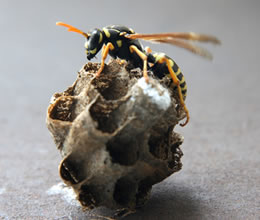
Kicking the Hornet’s Nest
 OK, you Stieg Larson fans, I’m not Lisbeth Salander, the heroine of the best-selling trilogy. I have neither her wits nor her strength. But I have kicked a few hornet’s nests in my career. Some of these nests were full of angry hornets and some full of non-aggressive bumblebees. However, every instance reinforced the importance of doing the right thing for the organization, even if it meant getting stung.
OK, you Stieg Larson fans, I’m not Lisbeth Salander, the heroine of the best-selling trilogy. I have neither her wits nor her strength. But I have kicked a few hornet’s nests in my career. Some of these nests were full of angry hornets and some full of non-aggressive bumblebees. However, every instance reinforced the importance of doing the right thing for the organization, even if it meant getting stung.
The Nest Full of Angry Hornets
In one organization I was acting as both a PM and a BA. My manager asked me to put together a project request for a business director in an area completely outside of my expertise. I met with the person I had assumed would be the sponsor, but who didn’t seem to understand why I was there. I asked lots of questions and didn’t got a cozy feeling that the business problem had been defined or that this person would be an engaged sponsor. I wrote up my findings recommended that we not pursue the project until we defined the business need and a business case and had gotten a sponsor on board. When I presented these findings to my manager, I was brusquely told me that this was not what he was looking for and that I should put together a project request.
I then decided to kick a little harder. I went back to the business director and asked more questions and talked him through the information needed for a project request. So far so good. But when I asked him to sign it, he refused. I explained why his signature was important and asked if there was someone else that should sponsor the project. When he asked why I couldn’t sign it, I discussed the relationship between signing the request and owning the project. I kicked a bit harder and said I’ be happy to manage the project but not own it. I returned to my manager and explained the situation. I’m not sure what happened, but the project just sort of disappeared. It wasn’t given to another PM, nor put on the list of active, future, or deferred projects. It just disappeared. It seemed to me that convincing management not to proceed with the project was a major success. I was delighted with the outcome, because had we gone ahead without a real business need and sponsor, it would have been a nasty project indeed.
I remember another instance when I kicked the nest with a less positive outcome. I had just joined a company with about two dozen project managers who were expected to do both project management and business analysis work. Each week we met to discuss our projects and issues. I remember that the first meeting I attended seemed to drag on endlessly. I was bored and impatient and wanted to move to a more interesting topic. I offered what I thought was a solution to the problem they were discussing. The conversation stopped. All eyes turned in my direction. I started to justify my approach, but then all eyes turned away and other voices rose over mine. The issue continued to be addressed, but when I tried to speak, two dozen hornets buzzed angrily around me. Later, one of the PMs pulled me aside and told me that the organizational culture required that new members didn’t speak up until they had been there several months. I broke the rules. I guess I was perceived as trying to usurp the queen bee’s place, and the nest would never allow that to happen. I learned what I should have known-listen and understand before speaking. A great lesson, but one that’s difficult for hornet nest kickers like me.
The Non-Aggressive Beehive
I once kicked at what I thought was a hornet’s nest. The project had an unusually ridiculous deadline. We were developing software and every time we turned around, it seemed, we experienced technical difficulties that slowed us down. The staff became frustrated. I had verbally told our management and the sponsor that the project might be delayed. The VP in charge of all the application software was displeased. “I don’t want to hear any excuses,” he said.
Were technical delays excuses, I wondered. Surely anything beyond my control was easily explained and a reason to delay the project completion. Or so I argued with myself. What to do-what to do? I went through a period of mental hand-wringing before deciding to go back to my management consulting roots. I asked the team to keep track of the amount of down time caused by technical delays. After initial grousing and grumbling, the staff complied. Once I had gathered enough statistics, I analyzed them and put together my findings and a recommendation. With fear and trepidation I set up a meeting to present the findings and recommendation to Management, who much to my surprise were enthusiastic in their praise of the approach and who actually agreed to extend the deadline.
I do believe that one of the great attributes of trust is courage. If we always act in what we believe to be the best interest of the organization, as risky as it sometimes seems, we will need to kick a few hornet’s nests, but that’s OK. It will likely earn respect. Sure we’ll get a few bites, but hopefully we’ll develop immunity to the sting and continue to recommend the right things.
Don’t forget to leave your comments below.
limousine Bangkok airport
… [Trackback]
[…] Read More to that Topic: batimes.com/articles/kicking-the-hornets-nest/ […]